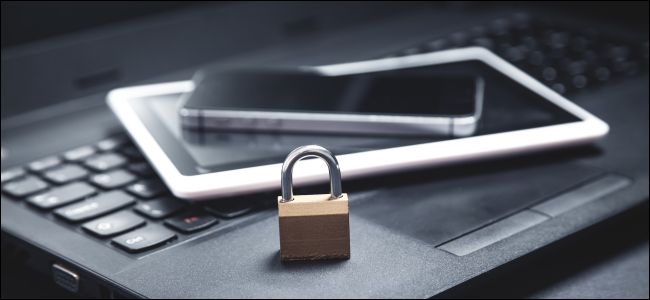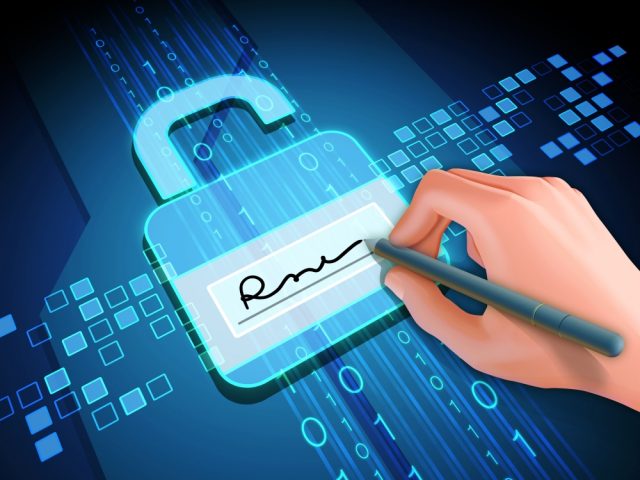Importance of Protecting Your Digital Signatures
These days almost everyone has a visible and individual digital signatures. Physical proof of your identity comes in the form of documentation like social security and ID cards, driver’s
licenses, and passports. Online, especially when making transactions and using signature software to free esign documents online, you also have digital proof of ID, or ‘identity 2.0’.
Identity theft is a real issue, but fortunately, we have some simple-to-follow tips on how you can protect your digital identity by avoiding scams. We’ll also tell you some of the foremost ways to make theft more difficult in the first place!
Importance of Protecting Your Digital Signatures
 As more and more processes move online, it’s becoming impossible to separate identity from online presence. There are two parts to this: the critical elements (digital signatures, e-mail addresses, personal website URLs), and the voluntary section (details shared on social
As more and more processes move online, it’s becoming impossible to separate identity from online presence. There are two parts to this: the critical elements (digital signatures, e-mail addresses, personal website URLs), and the voluntary section (details shared on social
media, information shared from your mobile devices, your location, your search history, and more).
Companies know the importance of all of this and implement more and more safety
measures each day, including top-tier technology like biometric scanning and face and voice
recognition. Sadly, in 2018, close to 60 million US citizens still were victimized by identityfraud.
Common kinds Of Identity Theft
Like it or not, everyone – rich or poor, famous or unknown, from any
Demographic – can be a target of or victim of identity theft. Fortunately, most cases can sort into a few categories,
so at the very least, you’ll know the areas in which to remain vigilant.
Credit card fraud – A well-known case in which a thief uses the details from your card to withdraw money or make a purchase for themselves in your name.
Other identity theft – When someone uses your name, photo, signature, or additional
personal identifying information to make money for themselves
Loan/lease fraud – When a thief uses your information to secure a loan or lease for themselves
Bank Fraud – The identity thief will use your information to commandeer your bank account.
Alternatively, they may open another account using your details.
Tax Fraud – The guilty party will use the information they have of yours to file a tax return for income.
Protecting Your Online ID
There’s no way to protect any form of identity entirely, but changing a few online behaviors can keep you extra safe going forward.
You should consider:
E-mail Addresses – use a separate address for work and personal registrations, contacts, and other needs.
Various social accounts – try not to link all of your accounts together, as this means that
when someone accesses one, they can access them all.
Passwords/passphrases – make sure your passwords are secure. There are plenty of free
programs that will generate complex random passwords and remember them for you.
Two-factor authentication – this is an extra layer of security every time someone tries to access any account.
Firewalls and anti-viral software – make sure these are always up to date and scanning regularly.
WiFi networks – avoid public systems for any sort of crucial personal information.
Search engines – check what results come up with your name every so often so that you can control it.
In Case Of Theft
Sometimes, unfortunately, data breaches will happen no matter what you do. The important thing is not to panic. Treat it the same way you would any other kind of identity
theft and take it step-by-step.
1. Change and secure all of your passwords and PINs. Never share these with anyone,no matter what.
2. Make sure your bank account number has not been shared and talk to the bank if so.
3. Update security software.
4. Check your current IT programs for security measures.
E-Signature Software And Security
As the use of Digital Signature software becomes more and more common thanks to the
ease and convenience of use, they serve as another alley for cybercriminals. Fortunately,most software includes features like:
Two-factor/dual-factor authentication – requires confirmation by an e-mail, SMS, or PIN code to confirm log-in attempts are valid.
Compliance with CFR Part 11 – this means both the sender and signer’s identities will be
verified. Session times will also get recorded and delivered in a detailed audit trail.
Digital certification – These authentications let you know if anyone has tried to interfere
with the document, often called ‘tamper-proofing.’
Advanced Threat Protection (ATP) – this does what it says on the tin, protecting your data
from malware, phishing, malicious links, and more.
Digital identity is now just as important as your physical ID. Don’t fall into the trap of
Overlooking it – just stay vigilant, and make sure you’re protected!
Security is also a top priority for eSign Genie. No matter if you are sending and receiving
contracts, agreements, and other signature required documents. eSign Genie keeps your
documents secure at all times.
With eSign Genie, forgery is practically impossible. Our electronic signature tool uses 256-bit
encryption to make sure that your signature is secure, and that only you can add it to
documents but also when you store and send data (encryption for data at rest and in
motion). Additional security measures such as a firewall with a default deny mode and
drastic traffic restrictions, fine grain role-based security, tokenization, and other advanced
techniques to protect your data privacy.








